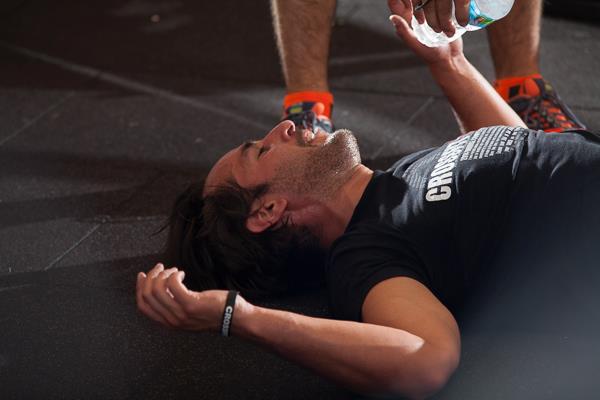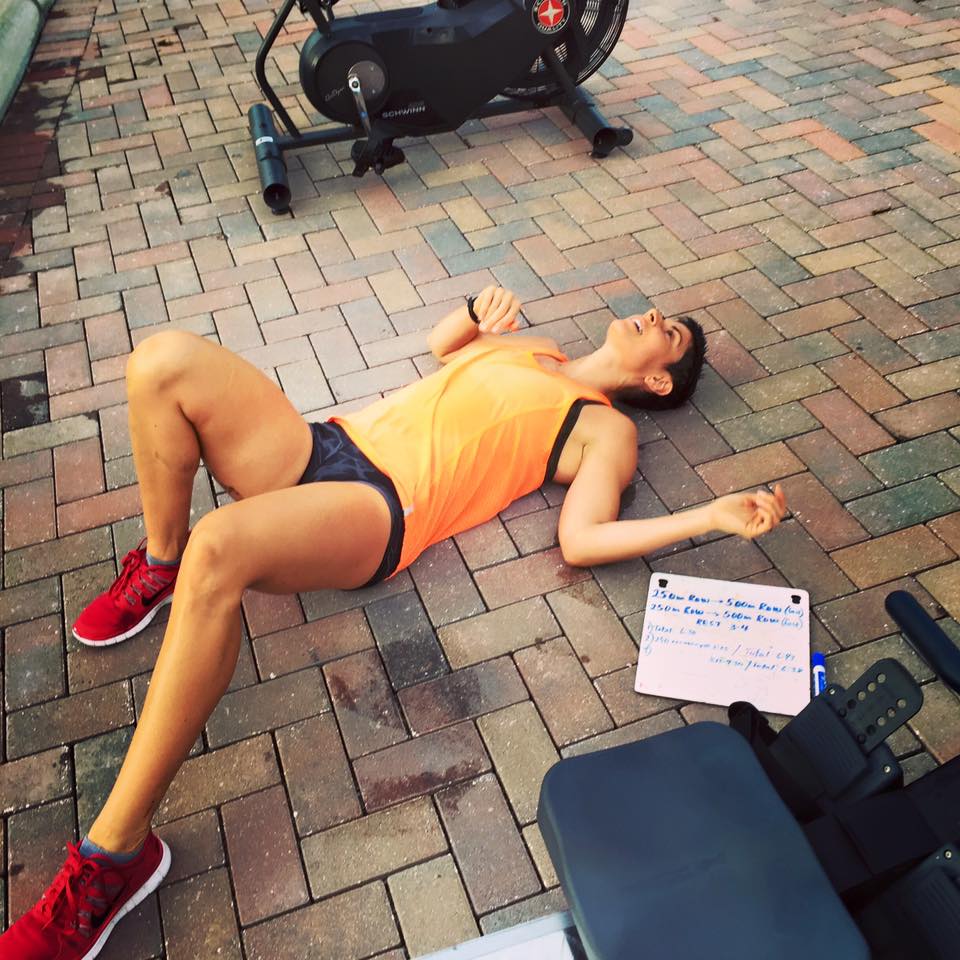We’ve all heard the saying “train your weaknesses until they become your strengths,” but like most (slightly cliche) phrases, this one is also easier said that done.
For most athletes, it’s easy to identify our strengths. We know if we’re good at endurance workouts, have a large aerobic engine, can lift beast mode sized weights or bang out hundreds of reps of a movement without fatigue.
It’s usually pretty easy to identify our weaknesses as well. It’s fixing them that’s the tricky part. And we’re not alone.
In 2009 we saw Jason Khalipa almost score a DNF (did not finish) in the run event- passing out and nearly not reaching the finish line. In 2013 he did a BoxLife Magazine interview where he commented on working on his weaknesses- sighting running as one of them. He mentioned in the interview that he was doing it 3-4 days per week to try to improve.
His hard work pay off in 2013 at the Games, where he laid down an absolutely incredible performance and came in second overall to Rich Froning. With multiple endurance workouts to choose from Khalipa dominated, placing 3rd in “Naughty Nancy,” which included over 2400 meters of running and first in the Burden Run, an event that started with a 2.1 mile run.
So what did he do to transform his weaknesses into strengths? He planed the work and then worked the plan.
Training your weaknesses requires a systematic approach that we’ve broken down into just a few steps.
Step 1: Identify Your Weaknesses
Sure, this probably sounds like a no-brainer, but it’s not as easy as it might seem.
When it comes to training, some coaches believe there are two different types of weaknesses: actual weaknesses and perceived weaknesses.
Actual weaknesses are usually the easier of the two to identify. These are areas where you just stink. Like tripping over the rope repeatedly as you try to perform double unders.
Or more generally, you may struggle to break parallel and reach depth on your squat, and you have a weakness in the area of mobility.
If you have loads of strength, but when it comes time to do say, 100 reps of a movement, you run out of gas in your lungs and heart way before your legs fatigue, endurance is a likely limiter for you.
To identify actual weaknesses, look at your training and performance objectively and identify areas where you excel, and where there is room for growth.
The second type of weaknesses that are sometimes far more difficult to identify are perceived weaknesses.
Think about every amazing runner that has ever gone flying by you during a WOD and then complained about how they hate running afterwards. Or the athlete who constantly complains about double unders, but has no trouble moving through them in workouts, and is practicing triples as I write this.
Sure, those people sometimes make us stabby, but chances are you have a few perceived weaknesses of your own. If you don’t like doing something, you may find that even if you aren’t terrible at it, you still have a psychological limiter that is affecting your performance and keeping you from reaching your maximum potential. Identify these emotional weaknesses, and add them to your list of things to work on.
Sometimes, just identifying them is a step in the right direction of making them a strength.
Step 2: Pick a few to focus on
If you’re anything like me, your weakness list might be a bit long. As in 27 items long, and those are just the short term ones. Yes, it can be overwhelming to look at yourself holistically as an athlete and the areas where you want to improve, but having a solid understanding of the big picture can help you to identify the baby steps you’re going to take to get there.
They key to success in improving those weaknesses is to choose a just few to focus on at a time. I’ve found that it’s really helpful to categorize weaknesses into areas that might compliment each other. For example, if you’re having issues with squat depth as well as getting in the right position overhead for snatches and squats, it might be helpful to identify that weakness as mobility and then begin your goal setting and strutted training from there.
If running and metcon workouts fall into the weakness bucket for you, it could be that aerobic conditioning and endurance are your limiters, and could be grouped together as an opportunity for improvement. In many cases, improving one weakness might directly (or even indirectly) improve another. If that is the case with several of yours, group them together in your goal setting and improvement cycle for great results and to kill two birds with one stone.
In this step it’ll be important to determine a baseline for the weaknesses you’re working on this time around. Whether it’s running a mile for time, lifting one rep maxes, or doing a metcon style workout with your weak movements and counting reps, you’ll want to choose a measurement that will serve as your starting point, and is able to be duplicated to retest your progress in the future.
Step 3: Set Goals
Goal setting is a bit of an art in and of itself, but setting achievable goals is an important step in improving your weaknesses.
I love the S.M.A.R.T. model of goal setting- clearly defining your goals in ways that are specific, measurable, achievable, results-focused and time-bound.
As most of us do our training in cycles, a great example of a S.M.A.R.T. goal for working on a weakness in strength might be:
Over a 6-week period I will increase my squat one rep max by 10% of my current one rep max weight.
This type of goal is not only achievable, but also gives you an excellent spring board for Step 4, creating your plan!
Step 4: Create your plan
Now that you know you’re weaknesses, have chosen which to work on, and set goals around those areas for improvement, it’s time to formulate your plan.
Depending on your goals, this might be where you need to call in the experts. Coaches and trainers at your local gym or box might have the type of expertise you need to help you put together your plan, or a little research online might be in order.
Remember, if you’re choosing a program online be sure to check for the credibility of the source. In the example above of increasing your squat strength, Smolov is a well known program with a deep history and proven results, but it might not be suitable for everyone. Be mindful of your goals, and create a plan that is achievable and safe for you and your current fitness level.
Step 5: Get ‘er done!
You’ve laid all the ground work, and now it’s time to put your head down and do work! This should be the part of the process that is the most fun.
Remember, show up every day. Follow the plan that you so carefully laid out, and above all trust your training!
Resist the impulse half way through to “check your progress” and do a workout designed to measure how far you’ve come. It’s important to complete your entire cycle (whether it’s 3 weeks, 10 weeks, or anywhere in between) and THEN test to see your awesome results.
Step 6: Retest and reassess
Once you’ve completed your program, the time is finally here to see how far you’ve come.
Re-do your initial weakness workouts to measure your progress, and sit down to analyze your results.
You’ll want to compare your initial stats with your new tests, and also look at how those improvements stacked up against the goals you set for yourself.
Did you sandbag your goals and knock them out of the park? Were some of the things you were aiming for unattainable? Or were you right on the money with what you hoped to achieve?
Once you’ve seen your progress it’s time to answer the all-important question- have you developed your once-weakness into a strength, or is there more work to be done?
Not every weakness can be turned into a strength over night, but with focused attention, goals, training and assessment, everyone can improve in areas that might be limiting their performance.
So readers, which weakness will you be tackling first?


